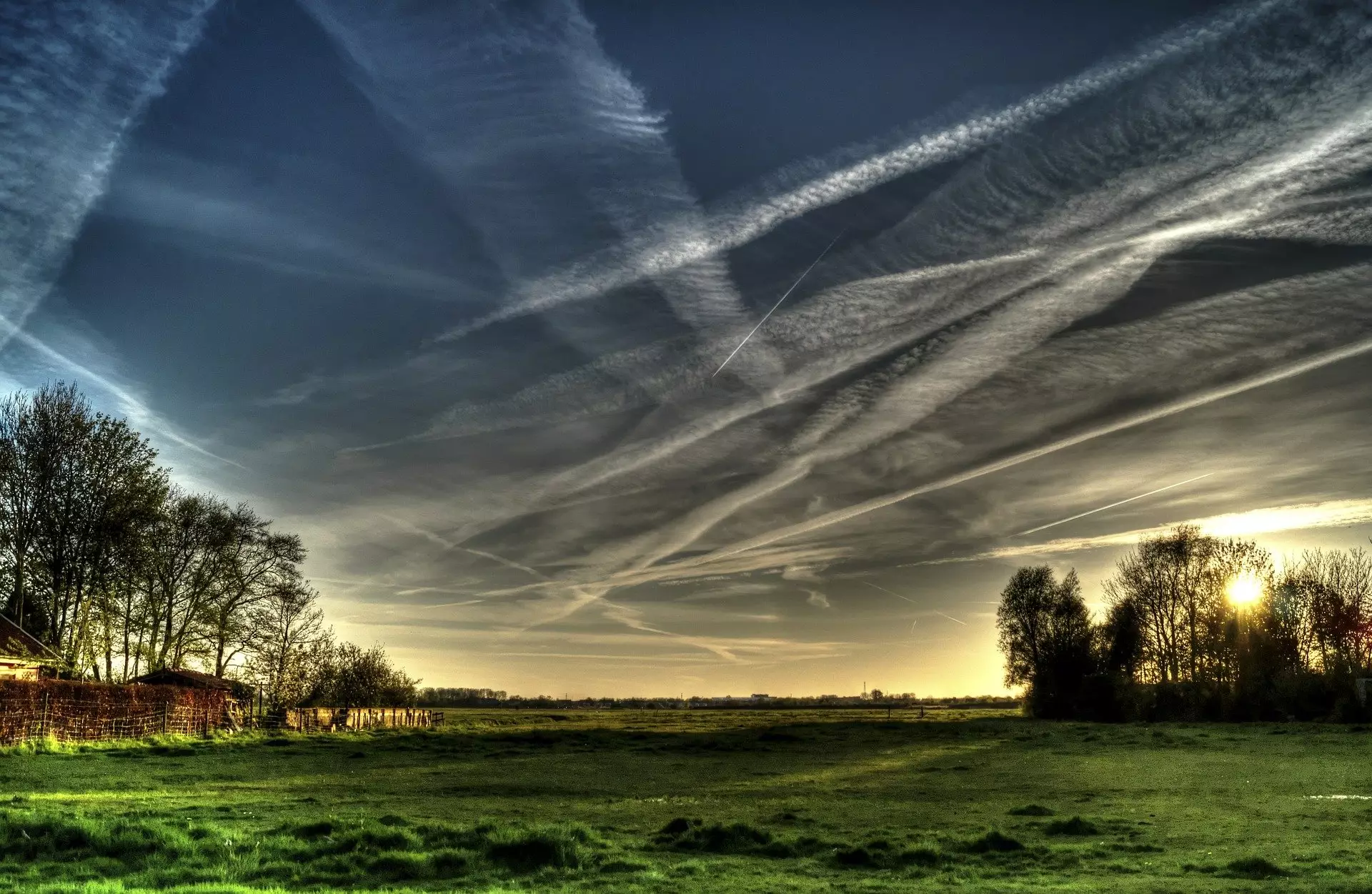In the ongoing battle against climate change, aviation has emerged as a key contributor to greenhouse gas emissions. Among these emissions, the formation of contrails—those white streaks left behind by aircraft in the sky—has drawn particular attention due to their potential to exacerbate global warming. Initially viewed as innocent remnants of high-altitude travel, contrails are now understood to trap heat in the atmosphere, effectively acting like clouds to warm the planet. Given their impact, researchers have begun exploring alternative flight routes that could help mitigate this effect. A recent study from Sorbonne University and the University of Reading offers new insights into the efficacy of such measures.
Published on September 15 in the journal Atmospheric Chemistry and Physics, the study suggests that rerouting flights to avoid contrail formation may actually provide a net climate benefit. Utilizing data from nearly half a million flights in the North Atlantic during 2019, researchers calculated the warming effects of carbon dioxide (CO2) emissions and the contrails produced by these flights. Surprisingly, they concluded that the benefits of avoiding contrail formation generally outweigh the additional CO2 emissions from flying alternate routes.
The implications of this research challenge the predominant political narratives that have colored the discussion surrounding flight rerouting. While prior apprehensions existed regarding whether the environmental costs of added CO2 would negate the advantages gained from contrail avoidance, this study has demonstrated that, for the vast majority of North Atlantic flights, the environmental benefits remain intact irrespective of the method used to measure CO2 equivalence.
The study employed nine different metrics to analyze the climate impacts of aviation, focusing on how each method would reflect on the relationship between contrail formation and carbon emissions. It was significant that in nearly all cases analyzed, rerouting flights proved beneficial—an encouraging finding that can be instrumental in shaping aviation policies in the years to come.
However, the researchers caution against becoming overly reliant on model predictions. There exists a significant amount of uncertainty surrounding the conditions under which contrails form and their precise climatic impact over time. Thus, while the research advocates for rerouting strategies, it also emphasizes the necessity for improved forecasting capabilities and empirical evidence from real-world trials before widespread implementation can occur.
The study’s co-author, Professor Nicolas Bellouin, highlighted the importance of translating these findings into practical applications. While the research lifts a critical obstacle in the conversation around contrail avoidance, the implementation of effective rerouting practices will require robust flight management systems and effective real-time data utilization.
One strategic recommendation from the study points towards identifying which flights generate the maximum warming contrails and prioritizing those for rerouting. By focusing efforts on flights that exhibit the highest potential for contrail-related warming, the aviation sector could significantly reduce its environmental footprint.
The outcomes of this study are both enlightening and compelling, as they propose a means of reconciling the aviation industry’s growth with the urgent need for climate action. Rerouting flights to prevent contrail formation presents a promising avenue toward reducing aviation’s contribution to global warming without prohibitive costs in CO2 emissions.
As discussions around climate responsibility evolve, it is crucial for stakeholders—from policymakers to airlines and environmental advocates—to unite around the possibilities outlined in this research. In doing so, the aviation industry may not only continue to thrive but do so with a renewed commitment to environmental stewardship for future generations.


Leave a Reply